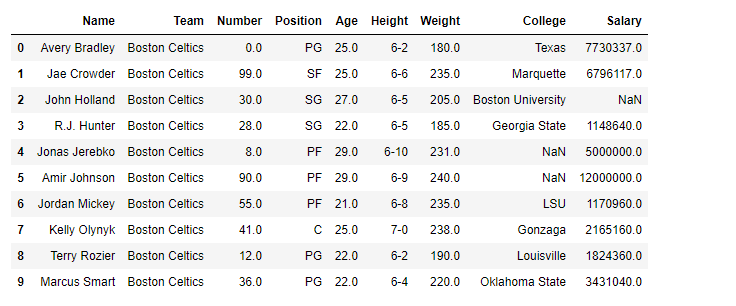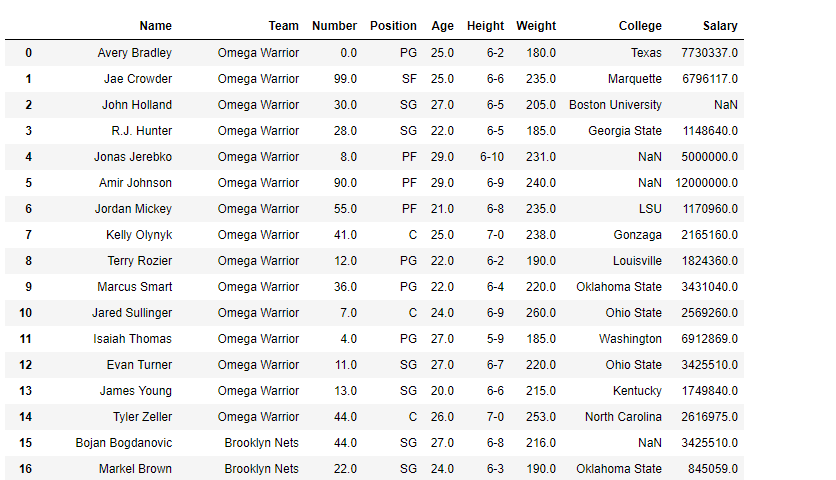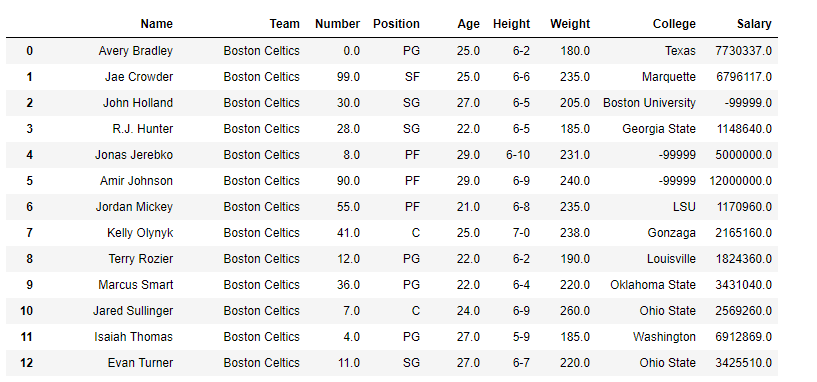Python | Pandas dataframe.replace() (original) (raw)
Last Updated : 11 Jul, 2024
Pandas **dataframe.replace() function is used to replace a string, regex, list, dictionary, series, number, etc. from a Pandas Dataframe in Python. Every instance of the provided value is replaced after a thorough search of the full DataFrame.
Pandas dataframe.replace() Method Syntax
**Syntax: DataFrame.replace(to_replace=None, value=None, inplace=False, limit=None, regex=False, method='pad', axis=None)
**Parameters:
- **to_replace : [str, regex, list, dict, Series, numeric, or None] pattern that we are trying to replace in dataframe.
- **value : Value to use to fill holes (e.g. 0), alternately a dict of values specifying which value to use for each column (columns not in the dict will not be filled). Regular expressions, strings and lists or dicts of such objects are also allowed.
- **inplace : If True, in place. Note: this will modify any other views on this object (e.g. a column from a DataFrame). Returns the caller if this is True.
- **limit : Maximum size gap to forward or backward fill
- **regex : Whether to interpret to_replace and/or value as regular expressions. If this is True then to_replace must be a string. Otherwise, to_replace must be None because this parameter will be interpreted as a regular expression or a list, dict, or array of regular expressions.
- **method : Method to use when for replacement, when to_replace is a list.
**Returns: filled : NDFrame
**Simple Example of Pandas dataframe.replace()
Here, we are replacing 49.50 with 60.
Python `
import pandas as pd
df = { "Array_1": [49.50, 70], "Array_2": [65.1, 49.50] }
data = pd.DataFrame(df)
print(data.replace(49.50, 60))
`
**Output:
Array_1 Array_2
0 60.0 65.1
1 70.0 60.0
Replace Values in Pandas Dataframe Examples
Here, we are going to see the implementation of dataframe.replace() methods with the help of some examples. For a link to the CSV file Used in Code, click here
Python `
importing pandas as pd
import pandas as pd
Making data frame from the csv file
df = pd.read_csv("nba.csv")
Printing the first 10 rows of the data frame for visualization
df[:10]
`
**Output:

Example 1: Replacing a Single Value
We are going to replace team "Boston Celtics" with "Omega Warrior" in the 'df' Dataframe.
Python `
this will replace "Boston Celtics" with "Omega Warrior"
df.replace(to_replace="Boston Celtics", value="Omega Warrior")
`
**Output:

**Example 2: Replacing Two Values with a Single Value
Replacing more than one value at a time. Using python list as an argument We are going to replace team "Boston Celtics" and "Texas" with "Omega Warrior" in the 'df' Dataframe.
Python `
importing pandas as pd
import pandas as pd
Making data frame from the csv file
df = pd.read_csv("nba.csv")
this will replace "Boston Celtics" and "Texas" with "Omega Warrior"
df.replace(to_replace=["Boston Celtics", "Texas"], value="Omega Warrior")
`
**Output:
Notice the College column in the first row, "Texas" has been replaced with "Omega Warriors"

**Example 3: Replacing Nan With a Random Integer Value
Replace the Nan value in the data frame with the -99999 value.
Python `
importing pandas as pd
import pandas as pd
Making data frame from the csv file
df = pd.read_csv("nba.csv")
will replace Nan value in dataframe with value -99999
df.replace(to_replace = np.nan, value =-99999)
`
**Output

Notice all the Nan value in the data frame has been replaced by -99999. Though for practical purposes we should be careful with what value we are replacing nan value.
Example 4: Replacing With Multiple Values
In this example, we are replacing multiple values in a Pandas Dataframe by using dataframe.replace() function.
Python `
importing pandas as pd
import pandas as pd
Making data frame from the csv file
df = pd.read_csv("nba.csv")
df1 = df.replace(['Boston Celtics', 'Amir Johnson', 'R.J. Hunter'], ['Omega Warriors', 'Mitcell Johnson', 'Shivang Thomas']) df1[:10]
`
**Output

How to replace values in DataFrame in Python?
You can replace specific values in a DataFrame using the
replace()method. Here's a basic example:import pandas as pd
df = pd.DataFrame({
'A': [1, 2, 3],
'B': [4, 5, 6]
})Replace all occurrences of 1 with 100
df.replace(1, 100, inplace=True)
print(df)
What is the replace method in Pandas?
The
replace()method in pandas is used to replace a value with another value. It can handle single values, lists, or dictionaries, making it very flexible for various use cases:Replace multiple values at once
df.replace({2: 200, 3: 300}, inplace=True)
print(df)
How to replace string in python DataFrame?
To replace string values, you use the same
replace()method. This method is useful for modifying specific string entries across the DataFrame:df = pd.DataFrame({
'A': ['foo', 'bar', 'baz'],
'B': ['foobar', 'barfoo', 'foobarbaz']
})Replace 'foo' with 'new' in column A
df['A'] = df['A'].replace('foo', 'new')
print(df)
How to replace substrings in DF?
If you want to replace parts of strings within a DataFrame, you might use the
str.replace()method, which is part of the string methods for pandas Series:Replace substrings within the DataFrame
df['B'] = df['B'].str.replace('foo', 'new')
print(df)
How to replace missing values in DF?
To replace missing values (NaNs) in a DataFrame, you can use the
fillna()method, which is highly effective for handling missing data:df = pd.DataFrame({
'A': [1, 2, None],
'B': [None, 5, 6]
})Replace all NaNs with a specific value
df.fillna(0, inplace=True)
print(df)Or replace NaNs with the mean of the column
df['A'].fillna(df['A'].mean(), inplace=True)